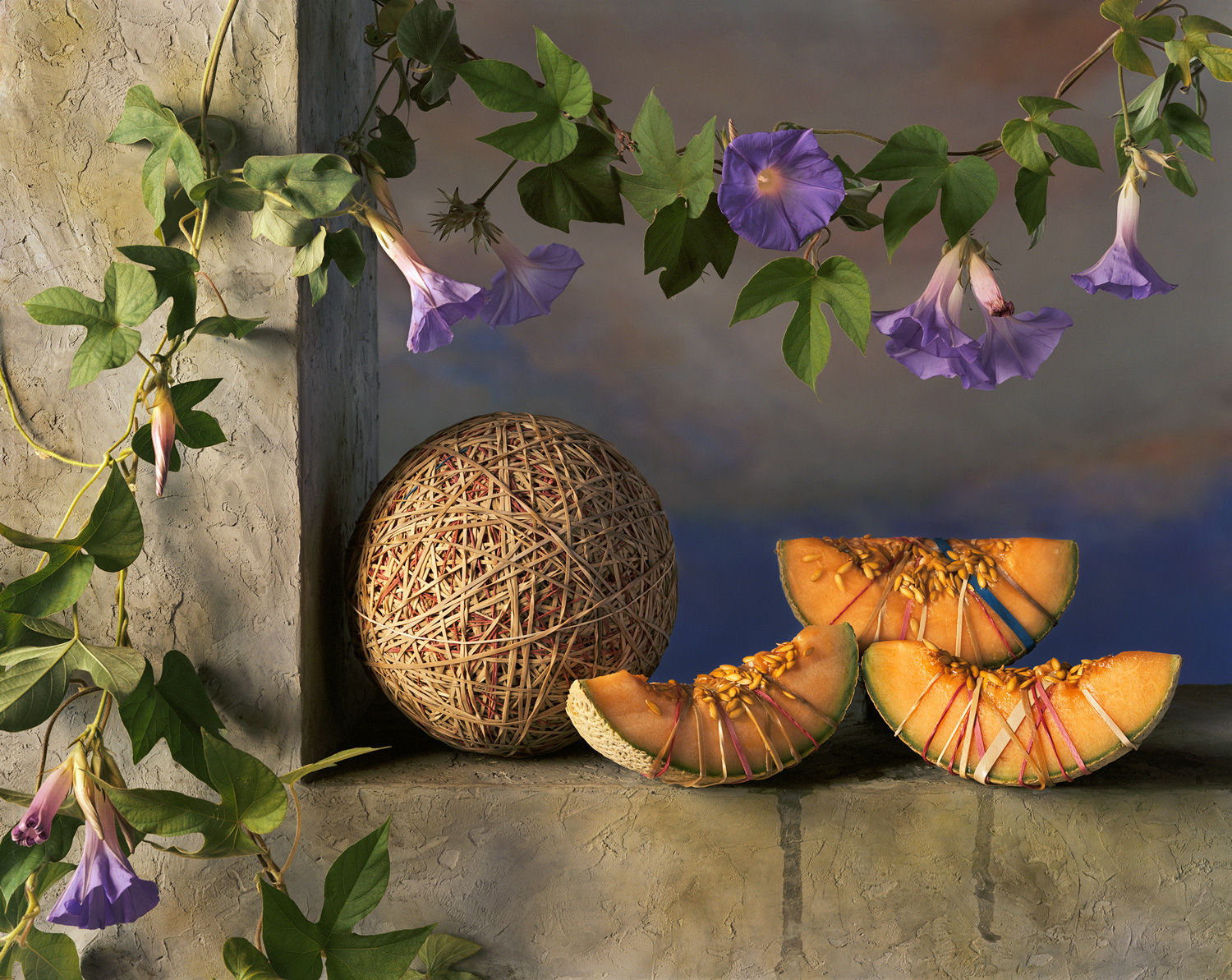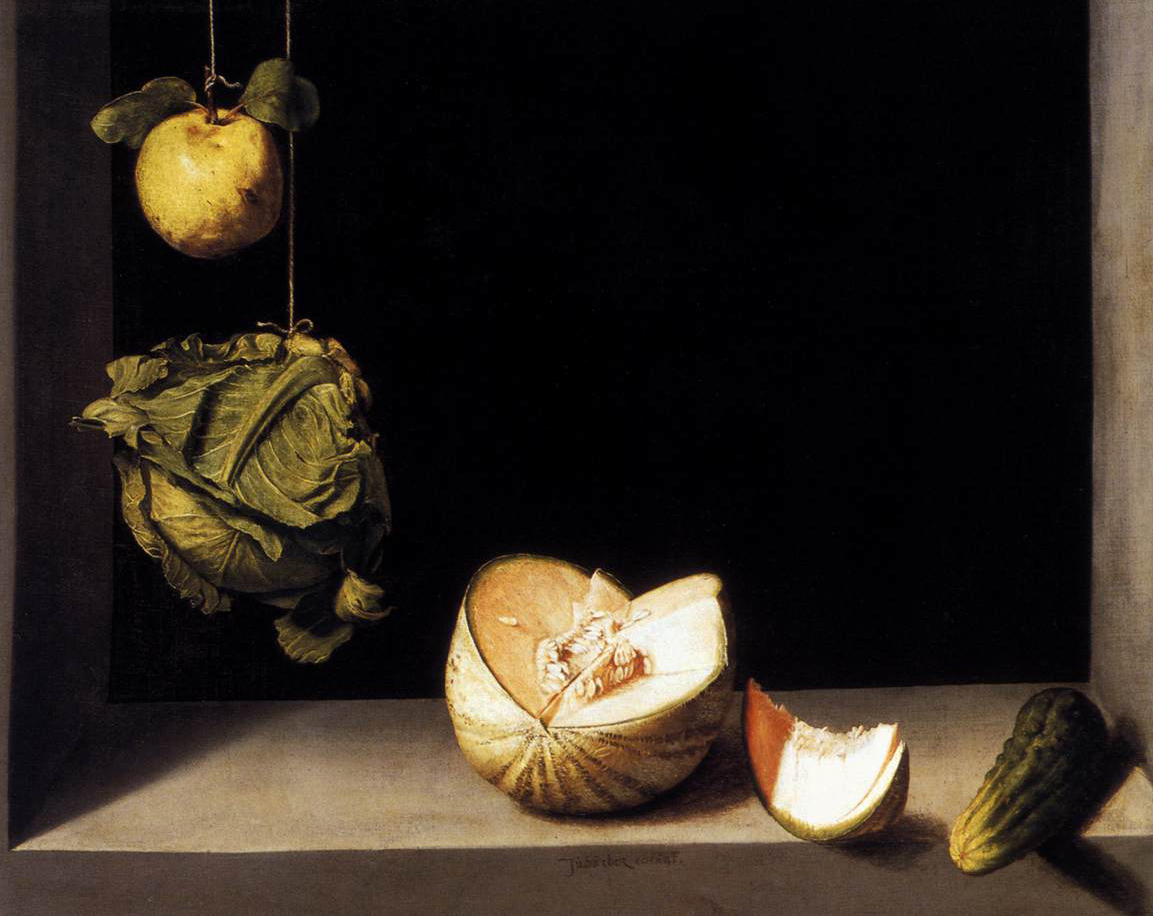The San Jose Museum of Art, 2001
The San Jose Museum of Art, 2001


Alternately familiar, seductive and disturbing, the photographs from Jo Whaley’s Natura Morta series offer multiple layers of visual experience. Traditional still life imagery such as a simple basket of ripe peaches, initially entices the viewer with vibrant, exaggerated color before revealing the unsettling decomposition of the fruit. Significantly, Natura Morta means “still life’ in Italian, with the literal translation of the words being” dead nature”. Between 1991 and 1996, Whaley created Natura Morta in four thematic categories-the first being Flora, then Cornucopia, followed by Interfacing Habitats and Science and Technology. For each group, she drew inspiration from the rich history of European still life painting. Flora is derived from 17th century Dutch floral paintings-intricate, formal compositions noted for their glistening hyperrealism. Cornucopia relates to 17th century Spanish bodegones-kichen pictures bearing fruit, vegetables and game. In Interfacing Habitats, Whaley humorously reconsiders “after the hunt” paintings, featuring dead animals. And finally, in Science and Technology, Whaley updates the symbol laden vanitas tradition of addressing the transitory nature of human life by considering the long-term effects of modern scientific pursuits. Combining elements of painting and theater, Whaley constructs still life sets using props from her vast inventory and photographs them. She imbues the traditional still lifes with contemporary cautionary messages by altering and updating the components of her tableaux. The rubbery rind of a cantaloupe is literally laced with rubber bands. Delicate flowers and butterflies are clamped by awkward laboratory equipment. She completes the image with the addition of theatrical lighting and painted backdrops of apocalyptic skies. The artist does not employ digital techniques to enhance her photographs. Whaley’s clever and troubling juxtapositions of organic and manmade objects address her main concern-what, ultimately, are the consequences of our modern, engineered world and consumer based society?